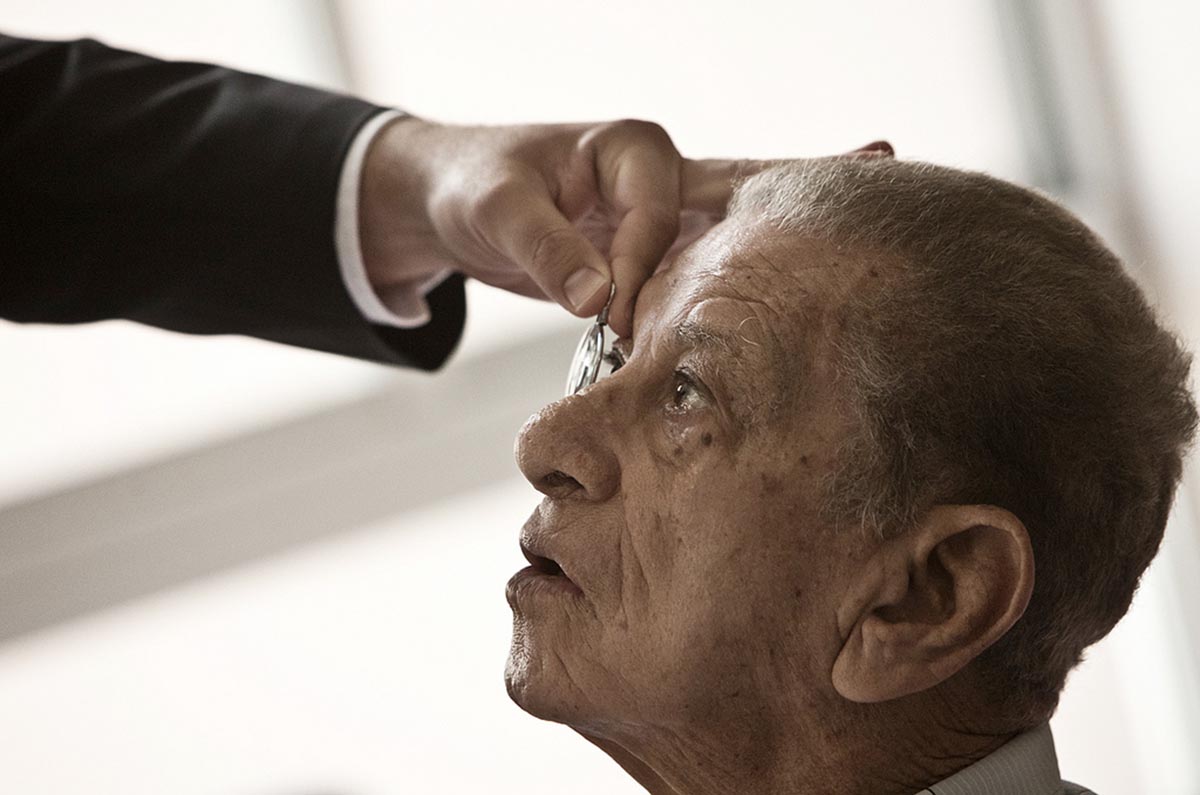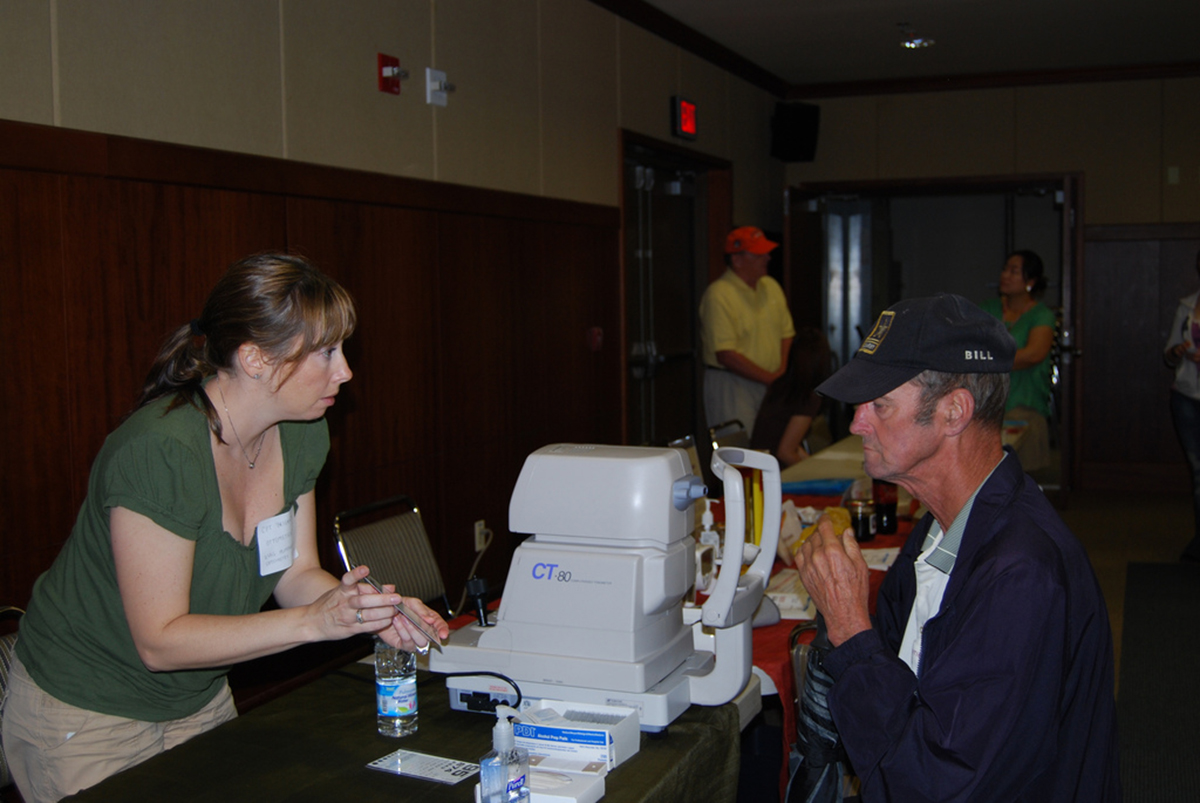Old age often comes with a lot of diseases and problems. Eye problems are one of the most important issues people are very likely to deal with. As you get older, not only do your body tissues get weaker and softer, some decline in your senses, starting with your eyes, is also expected. It is important to get your eyes examined as you get older and if you already have eye problems, do not wait until it gets worse.

Let's take a look at the most common eye problems you are likely to face as you age.
Age-related Macular Degeneration (AMD)
AMD is the most common cause of vision loss in people older than 50. Age-related macular degeneration is a condition that occurs in older adults, as a result of damage to the retina. This damage leads to gradual loss of vision in the macula (2.1% of the retina) which results in central vision loss. Peripheral vision (97.9% of the retina) is not affected in this disease. About 1 in 8 people aged over 80 have AMD. It is more common in women. AMD is painless. There are two types of AMD: wet and dry.
Dry AMD is the most common form of AMD. In this condition, the retinal pigment epithelial cells slowly degenerate, leading to loss of photoreceptor in the macula. Because this is a progressive disease, the symptoms set in gradually and complete vision loss may take years.
Wet AMD is the more severe form of AMD. It is rare and occurs as a result of an abnormal blood vessel which may rupture and cause bleeding. Compared to dry AMD, complete loss of vision can occur in just months with wet AMD.
Some of the symptoms of AMD are:
- An inability to recognize faces
- An inability to read
- Blurred vision
- Distorted vision
- An inability to differentiate colors.
Cataracts
A cataract is the clouding of the lens in the eye.
The lens, which is the part of the eye responsible for focusing light on the retina, is made of proteins which could clump and create cloudy areas. If the lens is not clear, the retina would not receive a sharp image. Although cataracts develop slowly and over time, they can seriously impair your vision.
Cataracts can be caused by inherited genetic disorders but as you age, the tissues that make up your lens are broken down and clump together, which can also cause clouding of the lens. Also, environmental factors can cause cataracts to get worse over time. There are different types of cataracts. Some of the symptoms include blurry vision, double vision, increased sensitivity to light, and difficulty seeing at night. Cataracts can be removed surgically, in a very simple opreation that can completely restore sight.
See Also: Cataract surgery
Glaucoma
Damage to your eye’s optic nerve is what causes glaucoma. Glaucoma is a group of disorders. Increased pressure inside your eye can lead to damage of the nerves, which can lead to blindness over time. It is one of the main causes of blindness in the United States. The vision loss seen in glaucoma patients occurs over time. It is a gradual process and there is no treatment for glaucoma so prevention and early diagnosis is the key for this disease. There are two main categories of glaucoma: Open-angle and closed-angle glaucoma. They both relate to the angle between the iris and the cornea.
Differentiating The Two Types Of Glaucoma
Open-angle glaucoma is the most common type of glaucoma. It progresses gradually and is often painless, so you might not know you have this disease until you have already lost a significant portion of your vision.
Closed-angle glaucoma is less common but is painful compared to open-angle glaucoma. This condition can appear suddenly and it causes discomfort which leads to people seeking medical attention before it gets worse.

Diabetic retinopathy
Retinopathy means damage to the retina. Diabetic retinopathy is the damage to the retina caused by complications of diabetes. It is a very common complication of diabetes. Over time, high blood sugar can cause blood vessels in the eye to leak. This blockage and leakage diminishes the blood supply to the retina, thereby causing damage. The symptoms of diabetic retinopathy might not appear right away and you may not realize how damaged your retina is.
Some of the most common symptoms of diabetic retinopathy include:
- Blurry vision
- Floaters (dark strings floating in your vision)
- Reduced night vision
- Sudden blindness
Diabetes can be deadly and the longer you have it, the higher your chances of having complications like diabetic retinopathy. It is very important to monitor your blood sugar, take the proper medications, and maintain a healthy lifestyle if you live with diabetes. If you have diabetes, it is advisable to have an annual eye examination even when you are younger.
Dry eye
It is medically known as Keratoconjunctivitis sicca (KCS) or Dry Eye Syndrome. Dry eye syndrome is a disorder that can be caused by either decreased tear production or increased tear evaporation. This occurs when your tears are not able to provide moisture to your eyes. As you get older, the production of tears decreases, which can lead to dry eyes. Dry eye syndrome is more common in women and it can be associated with inflammation of the lacrimal gland, any disease that changes the components of your tears, and hyperthyroidism. Certain medications can also cause dry eyes. Eye drops can help in some cases.
Some of the most common symptoms of dry eye syndrome include:
- Dryness of the eyes
- Scratchy eyes
- Stinging and burning of the eyes
- Redness of the eyes
- Foreign body and pulling sensation
- Increased sensitivity to light
See Also: Natural Remedies for Dry Eye Syndrome
Retinitis pigmentosa
Retinitis pigmentosa is an inherited degenerative eye disease that can cause blindness. Although symptoms of retinitis pigmentosa can occur in infants and the diagnosis is usually made in adolescents and young adults, most people with retinitis pigmentosa are legally blind by age 40. The later the onset of this disease, the more rapid it progresses.
Some of the more common symptoms of retinitis pigmentosa include:
- Night blindness (the most common symptom)
- Absent peripheral vision or absent central vision
- Blurry vision
- Difficulty differentiating colors.
These diseases described above can lead to low vision (Low vision occurs in people with reduced vision even after using corrective lenses, medicine, or doing surgery). More than 82 percent of people who are visually impaired are 50 years of age or older. This is why it is very important that everyone age 50 and above visit an eye care professional regularly. The earlier you get diagnosed, the better the chances of saving your sight.
Of course, the prospect of a potentially blinding disease isn't the only reason to get your eyes checked regularly; people over 50 also suffer from presbyopia, an inevitable condition that requires the use of reading glasses.
- Photo courtesy of ORBIS UK by Flickr : www.flickr.com/photos/orbis_emea/9630296474/
- Photo courtesy of USAG- Humphreys by Flickr : www.flickr.com/photos/usaghumphreys/4864134499/


Your thoughts on this